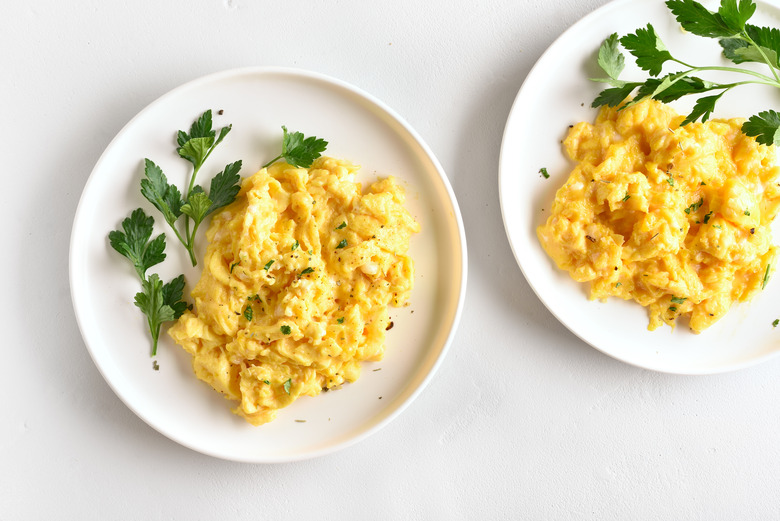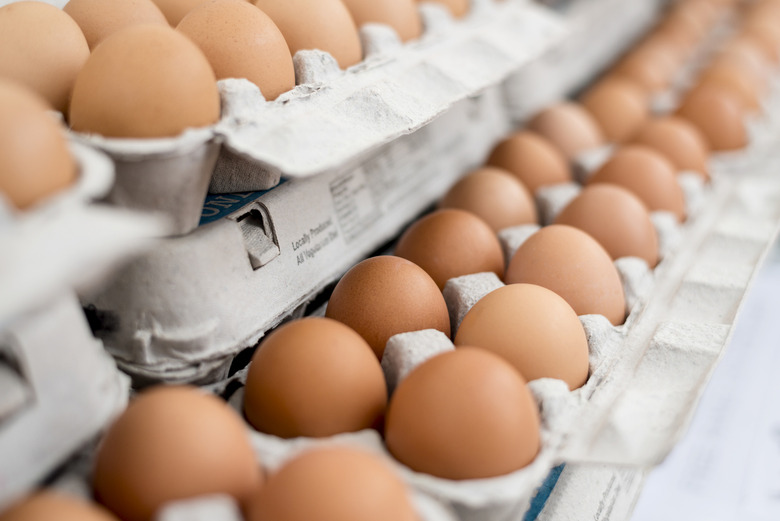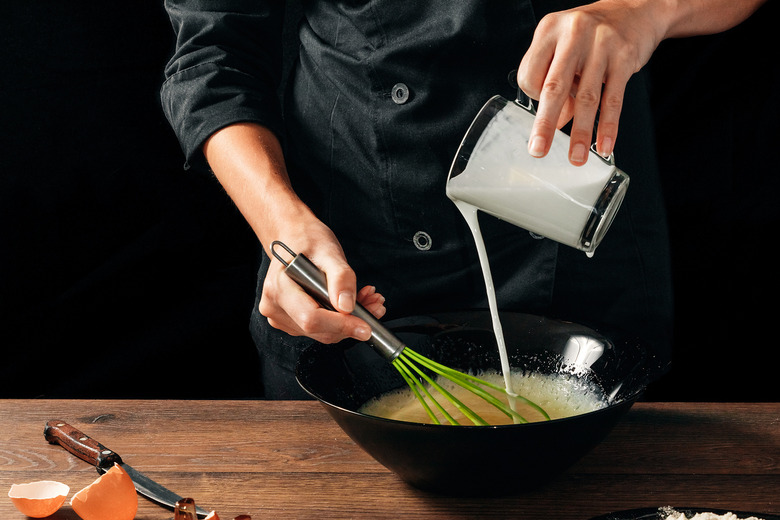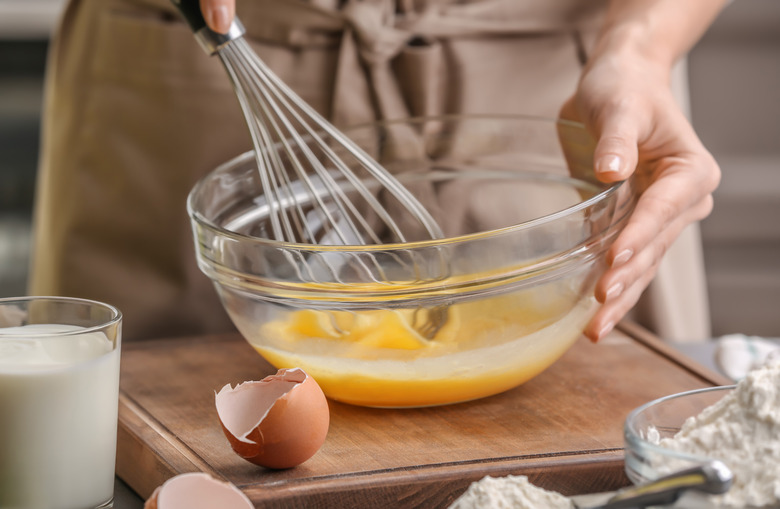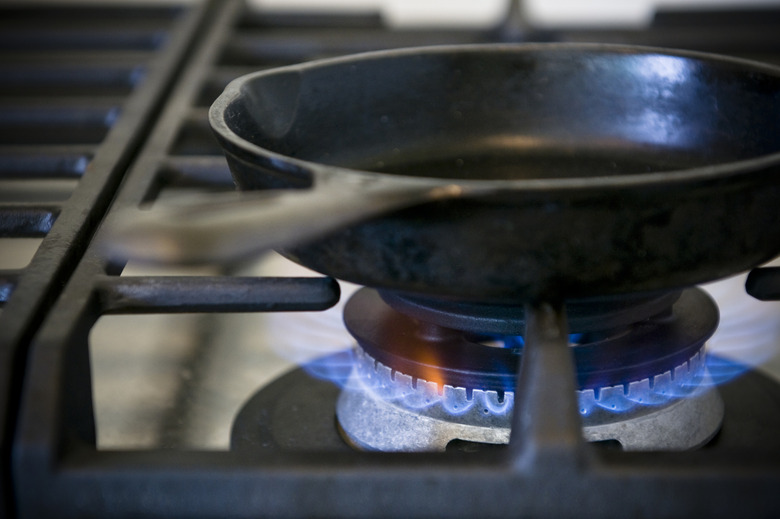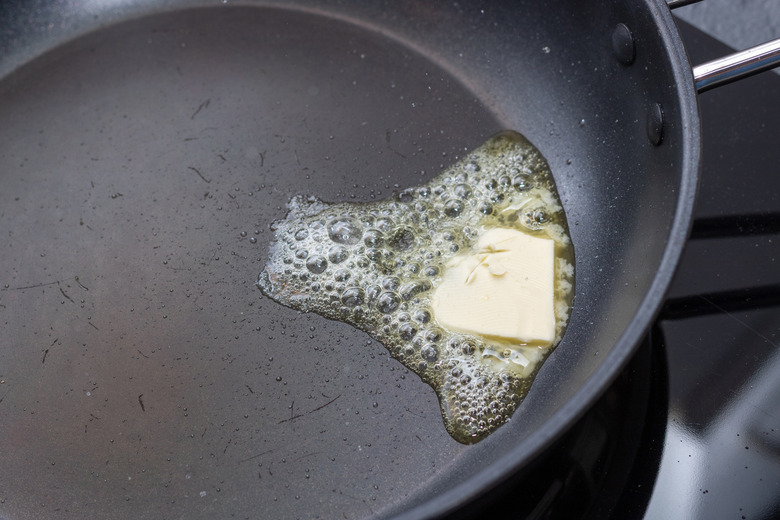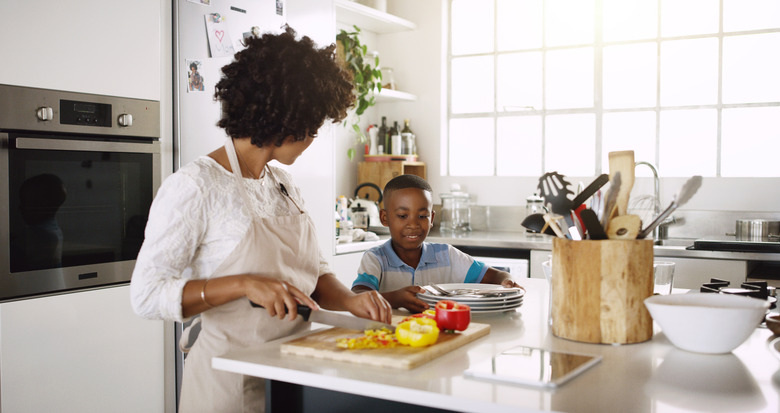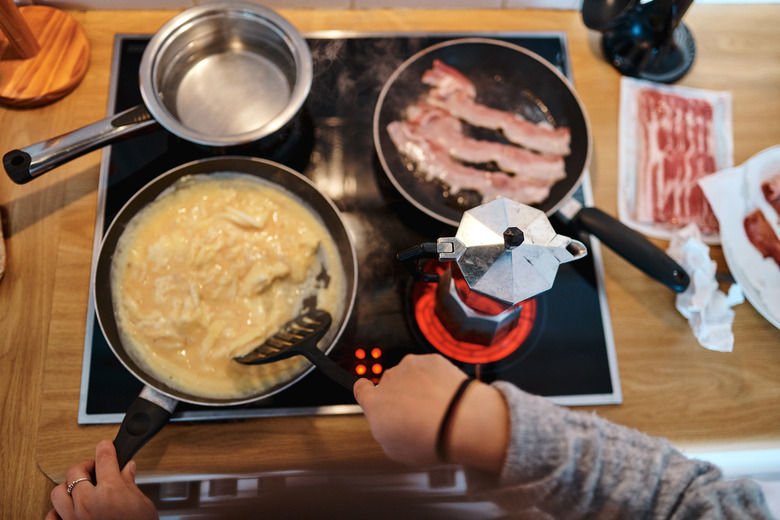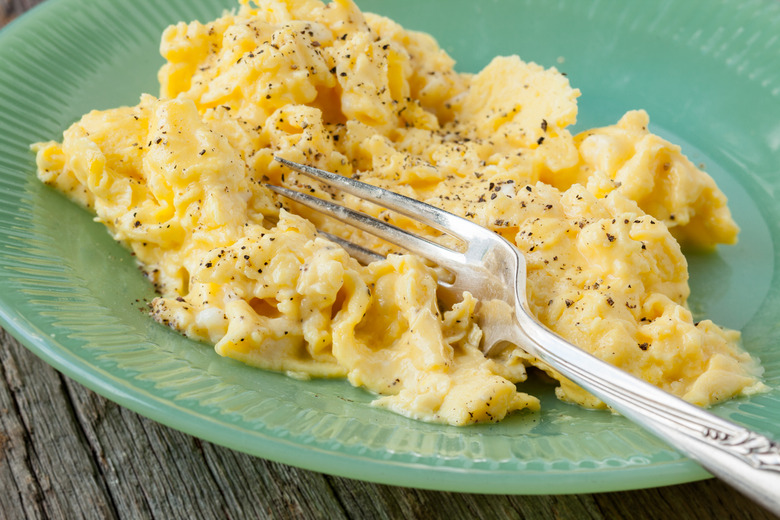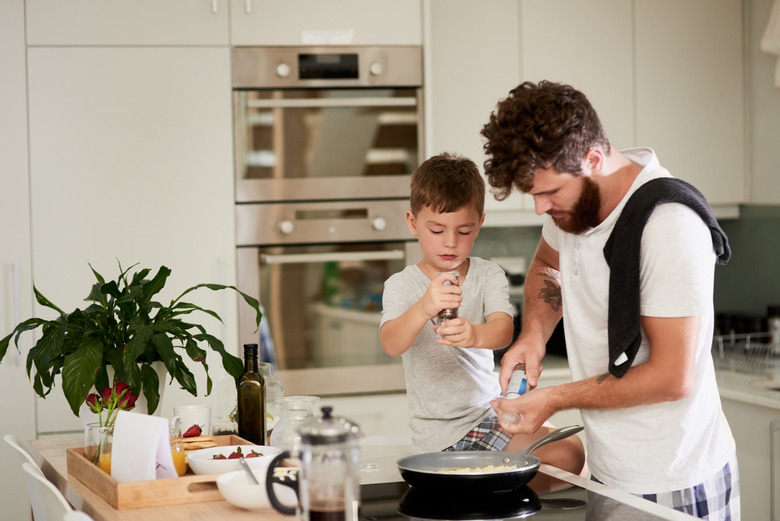This Is The Best Way To Make Scrambled Eggs, Period
Trying to flip an omelet or getting your poached eggs to not look like saggy balloons is hard. Luckily, when you're in a hurry, scrambled eggs are a simple way to incorporate a classic breakfast food into your meal. Or maybe you're not in a hurry, and you just don't want to eat flat, rubbery lumps with browned edges. Either way, this step-by-step guide will result in delicious, fluffy eggs.
Pretend Gordon Ramsay is standing behind you
Hey, panini head! Your stove can affect your cook time and temperature, so know what you're working with before you even start. Electric stoves, while convenient, often cook unevenly and more slowly than gas stoves.
Buy the freshest eggs
When purchasing your eggs, the fresher the better. Farmers markets and health food stores will offer farm-fresh and pasture-raised eggs. Supermarket eggs tend to be less fresh, but still good to eat. If you have eggs in your fridge and you're just not sure about them, use the smell test. If they smell bad, don't use them. If you're using a medium-sized skillet, four eggs is easy to work with, and six eggs will fit nicely in a large skillet.
You choose: water, milk, cream or nothing at all
This step is based on preference. Adding a teaspoon or so of milk or water is a common cooking practice when it comes to scrambling eggs. Cream is good for a frothy pre-scramble texture. Milk and water dilute the eggs. Food Network chefs Sunny Anderson and Alton Brown use cold water and milk, respectively. Chrissy Teigen uses heavy cream. Martha Stewart has said that if eggs are really good, they don't need anything in them.
Whisk it, whisk it real good
What you do want after whisking: foamy, frothy, smooth and light consistency. What you don't want after whisking: stringy goop. Get the desired effect by vigorously whisking, not just stirring.
Make sure your stove is set to medium-low heat
High heat will burn your eggs, low heat won't cook them fast enough for the creamy, curd-like texture you're aiming for. Again, keep in mind what kind of stove you're using. An electric stove could take longer to reach medium-low heat than a gas stove, so you might have to go through some practice runs to figure out the timing.
Use a nonstick skillet with butter
Nobody wants crusty, burnt edges. Butter has a lower smoke point than olive oil, making it a great option for a quick scramble. Melt 3 tablespoons of butter over medium-low heat. Pour the eggs before the butter browns, just before it's about to bubble. If the butter bubbles, the heat is too high.
Have your sides on deck before pouring
If you're going to add ingredients like herbs, cheeses or chopped vegetables, have them ready before you pour the eggs into the pan. You don't want to pour the eggs and then have to chop your vegetables or grate cheese while your eggs burn.
Pull the cooked edges in
Once you've poured the eggs into the pan, the key is continuous movement. Use a silicone spatula to pull the edges of the egg toward the center of the pan. Folding and pulling are the two movements that will get you a fluffy texture. If you feel like the eggs are cooking too quickly, lower the heat a bit. There isn't a hard and fast time for how long eggs should cook. If you like them more creamy, it'll take less time. If you like them more well done, lower the heat, but keep them cooking.
Have your plate ready
If you can, warm your plate before placing the eggs on it. Cold plates can zap the heat out of eggs, but a warm plate will keep your eggs warmer through serving.
Salt and pepper time
Add some salt and pepper for a bit of flavoring that won't overpower the eggs like herbs might. You can cook the salt and pepper into the eggs as you stir, or sprinkle some on top when they're done. Now that you have the basics down, you're ready for tips from the biggest celebrity chefs on how to make perfect scrambled eggs.
More from The Daily Meal
The Most Anticipated Restaurants of 2020
The Fascinating Origins of Your Favorite Cocktails
The Best Doughnuts in Every State
32 Foods That Help Fight Bloat
24 Things to Make With a Tube of Biscuit Dough — That Aren't Biscuits
